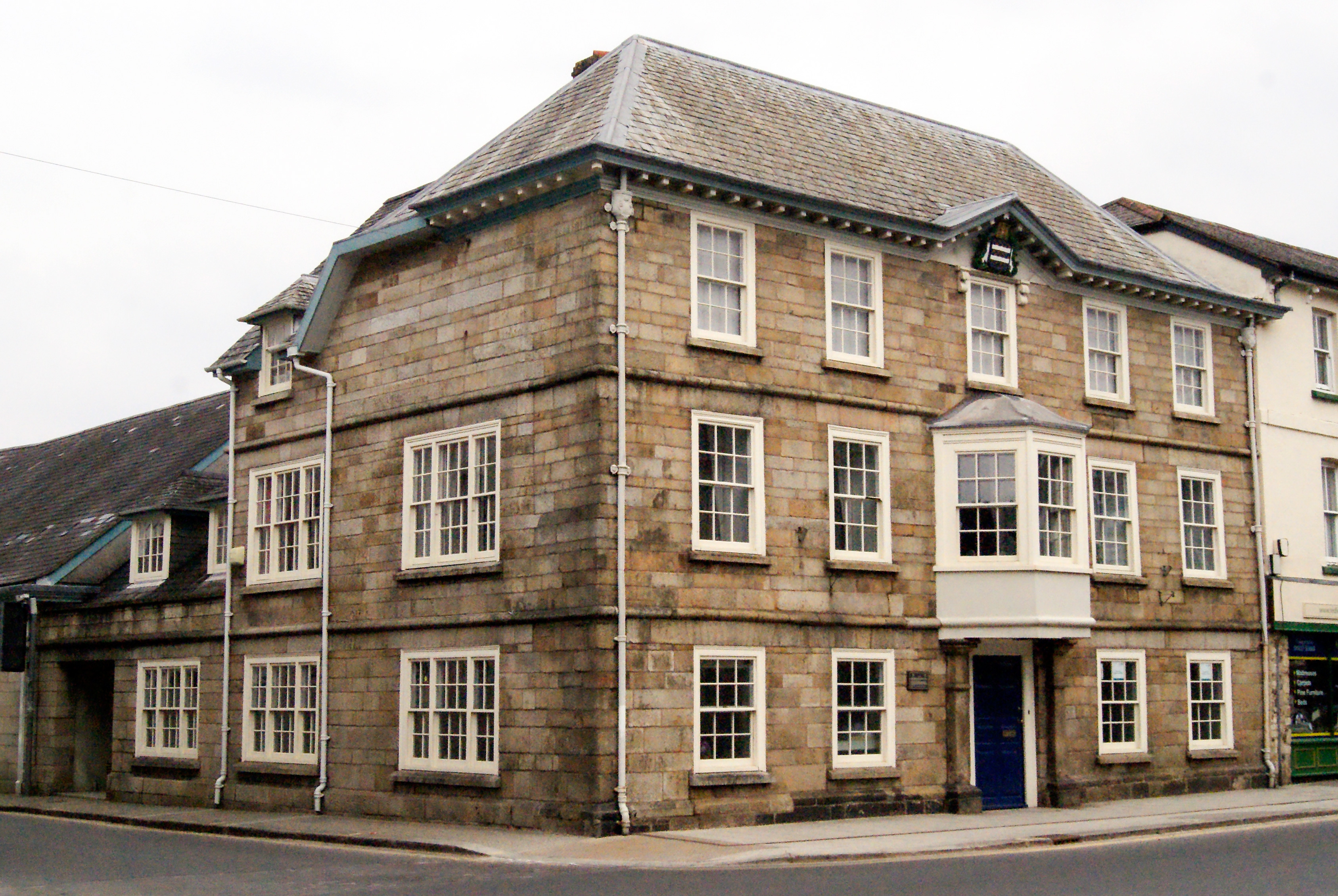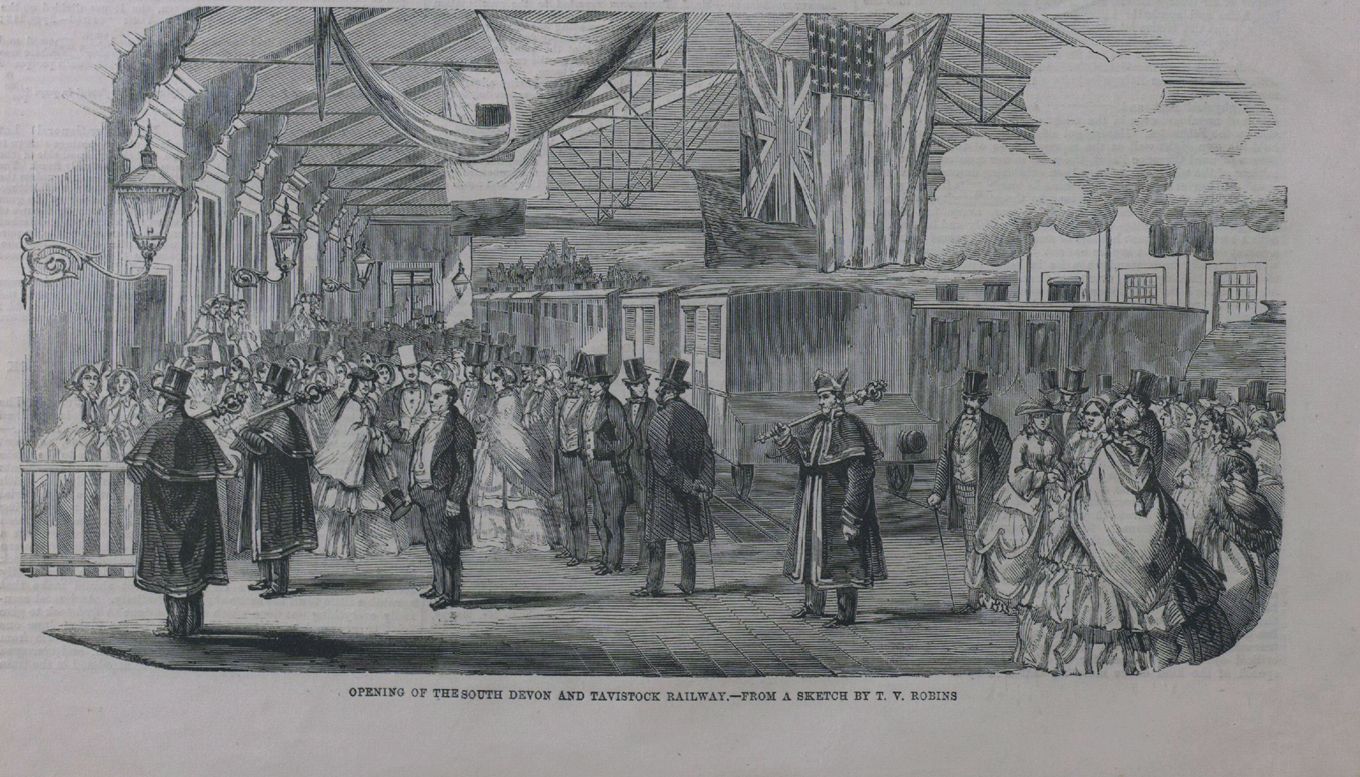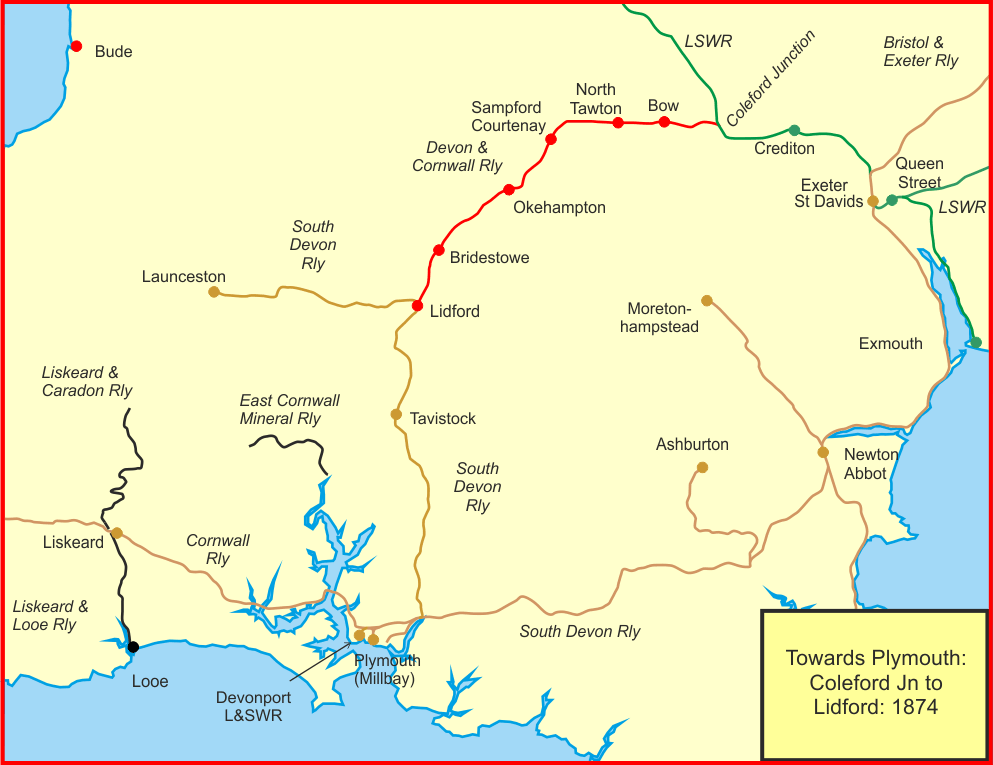|
Southern Railway Routes West Of Salisbury
This article describes the history and operation of the railway routes west of Salisbury built by the London and South Western Railway (LSWR) and allied companies, which ultimately became part of the Southern Railway in the United Kingdom. Salisbury forms a natural boundary between the Southern Railway core routes in the counties surrounding London, and the long route connecting with the Devon and Cornwall lines. Network The routes within the scope of this article spring westward from , which was reached from Southampton in 1847. By 1857 there was a direct line from , 84 miles away, and in 1859 this extended towards Yeovil via the GWR station in Fisherton. From Salisbury the main line continued broadly west, passing no major population centre until reaching Exeter. The difficult terrain, with numerous hills and valleys crossing the direction of the route, made selection of the alignment difficult, and several medium-sized towns were passed at a distance of a few miles. Many of t ... [...More Info...] [...Related Items...] OR: [Wikipedia] [Google] [Baidu] |
Salisbury
Salisbury ( ) is a cathedral city in Wiltshire, England with a population of 41,820, at the confluence of the rivers Avon, Nadder and Bourne. The city is approximately from Southampton and from Bath. Salisbury is in the southeast of Wiltshire, near the edge of Salisbury Plain. Salisbury Cathedral was formerly north of the city at Old Sarum. The cathedral was relocated and a settlement grew up around it, which received a city charter in 1227 as . This continued to be its official name until 2009, when Salisbury City Council was established. Salisbury railway station is an interchange between the West of England Main Line and the Wessex Main Line. Stonehenge is a UNESCO World Heritage Site and is northwest of Salisbury. Name The name ''Salisbury'', which is first recorded around the year 900 as ''Searoburg'' ( dative ''Searobyrig''), is a partial translation of the Roman Celtic name ''Sorbiodūnum''. The Brittonic suffix ''-dūnon'', meaning "fortress" (in reference ... [...More Info...] [...Related Items...] OR: [Wikipedia] [Google] [Baidu] |
Wilts, Somerset And Weymouth Railway
The Wilts, Somerset and Weymouth Railway (WS&WR) was an early railway company in south-western England. It obtained Parliamentary powers in 1845 to build a railway from near Chippenham in Wiltshire, southward to Salisbury and Weymouth in Dorset. It opened the first part of the network but found it impossible to raise further money and sold its line to the Great Western Railway (GWR) in 1850. The GWR took over the construction and undertook to build an adjacent connecting line; the network was complete in 1857. In the early years of the 20th century the GWR wanted to shorten its route from London to the West of England and built "cut-off" lines in succession to link part of the WS&WR network, so that by 1906 the express trains ran over the Westbury to Castle Cary section. In 1933 further improvements were made, and that part of the line was established as part of the "holiday line" to Devon and Cornwall. The network was already a major trunk route for coal from South Wales coa ... [...More Info...] [...Related Items...] OR: [Wikipedia] [Google] [Baidu] |
Okehampton To Bude Line
Okehampton ( ) is a town and civil parish in West Devon in the English county of Devon. It is situated at the northern edge of Dartmoor, and had a population of 5,922 at the 2011 census. Two electoral wards are based in the town (east and west). Their joint population at the same census was 7,500. Okehampton is 21 miles (33 km) west of Exeter, 26 miles (42 km) north of Plymouth and 24 miles (38 km) south of Barnstaple. History Okehampton was founded by the Saxons. The earliest written record of the settlement is from 980 AD as , meaning settlement by the Ockment, a river which runs through the town. It was recorded as a place for slaves to be freed at cross roads. Like many towns in the West Country, Okehampton grew on the medieval wool trade. Notable buildings in the town include the 15th century chapel of St. James and Okehampton Castle, which was established by the Norman Sheriff of Devon, Baldwin FitzGilbert (d.1090), and the 17th century Okehampton Town ... [...More Info...] [...Related Items...] OR: [Wikipedia] [Google] [Baidu] |
Plymouth, Devonport And South Western Junction Railway
The Plymouth, Devonport and South Western Junction Railway (PD&SWJR) was an English railway company. It constructed a main line railway between Lydford and Devonport, in Devon, England, enabling the London and South Western Railway (LSWR) to reach Plymouth more conveniently than before. The line was worked by the LSWR as part of its own system, but the PD&SWJR adopted the East Cornwall Mineral Railway which connected Kelly Bray and Calstock, and connected it to the main line at Bere Alston. This became the Callington branch, and the PD&SWJR operated the line itself through a subsidiary company. In the 1960s the main line from Lydford closed, as did the western end of the Callington line, but the section from St Budeaux to remains open and the passenger operation is known as the Tamar Valley Line. History Plymouth over the South Devon Railway The Great Western Railway (GWR) and its "associated companies", the Bristol and Exeter Railway and the South Devon Railway Company (SDR), ... [...More Info...] [...Related Items...] OR: [Wikipedia] [Google] [Baidu] |
South Devon And Tavistock Railway
The South Devon and Tavistock Railway linked Plymouth with Tavistock in Devon; it opened in 1859. It was extended by the Launceston and South Devon Railway to Launceston, in Cornwall in 1865. It was a broad gauge line but from 1876 also carried the standard gauge (then referred to as ''narrow gauge'') trains of the London and South Western Railway between Lydford and Plymouth: a third rail was provided, making a ''mixed gauge''. In 1892 the whole line was converted to standard gauge only. The line closed to passengers in 1962 although sections at either end were retained for a while to carry freight traffic. A short section has since been reopened as a preserved line by the Plym Valley Railway. History Getting the Tavistock line authorised The Plymouth and Dartmoor Railway, a horse-worked line, had been constructed to bring minerals from quarries near Princetown to Plymouth; it opened on 26 September 1823. The South Devon Railway (SDR) built its line from Exeter to Plymouth, o ... [...More Info...] [...Related Items...] OR: [Wikipedia] [Google] [Baidu] |
Devon And Cornwall Railway
The Exeter to Plymouth railway of the London and South Western Railway (LSWR) was the westernmost part of a route competing with that of the Great Western Railway (GWR) and its 'associated companies' from London and Exeter to Plymouth in Devon, England. Whereas the GWR route from Exeter followed the coast to Newton Abbot and then went around the southern edge of Dartmoor, the LSWR route followed the northern and western margins of Dartmoor, passing through the towns of Crediton, Okehampton, and Tavistock. The route was constructed piecemeal by independent companies, in most cases supported by the LSWR. LSWR trains first reached Plymouth in 1876 and the route took on its final form in 1891. The central part of the line closed in 1968, leaving just local services at either end. History Railways to Exeter The broad gauge Bristol and Exeter Railway (B&ER) was the first line to reach Exeter. It had reached St Davids station in Exeter in 1844 and was allied with the Great Western R ... [...More Info...] [...Related Items...] OR: [Wikipedia] [Google] [Baidu] |
North Devon Railway
The North Devon Railway was a railway company which operated a line from Cowley Bridge Junction, near Exeter, to Bideford in Devon, England, later becoming part of the London and South Western Railway's system. Originally planned as a broad gauge (7 ft 0¼ in, 2,140 mm) feeder to the Bristol & Exeter Railway, it became part of a battle between the broad gauge group and the standard gauge railway interests. In this context, standard gauge lines were often described as ''narrow gauge''. The original construction in the middle of the nineteenth century was significant in giving rail connection to the important, but remote towns of North Devon that had hitherto relied on the packhorse and coastal shipping. The Exeter to Barnstaple section followed the rivers Yeo and Taw, passing through pleasing countryside, and meandered with the valleys, but passing only very small settlements. It remains open between Exeter and Barnstaple, and passenger trains on the route are ... [...More Info...] [...Related Items...] OR: [Wikipedia] [Google] [Baidu] |
Exeter And Crediton Railway
The Exeter and Crediton Railway was a broad gauge railway that linked Exeter and Crediton, Devon, England. It was 5¼ miles (8½ km) long. Although built in 1847, it was not opened until 12 May 1851 due to disagreement about the gauge to be used. It was initially operated by the Bristol and Exeter Railway, but eventually became a part of the London and South Western Railway, thus being one of the few broad gauge railways never to become part of the Great Western Railway. It remains open as part of the scenic ''Tarka Line'' from Exeter to . History Early proposals Crediton was an important town at the beginning of the nineteenth century, and business interests there considered how transport links could be improved. In 1831 it was proposed to make a railway connection to a dock on the tidal River Exe at Exeter was needed; onward transport would be by coastal shipping. Parliamentary powers were obtained by Act of 23 June 1832. However no construction actually took plac ... [...More Info...] [...Related Items...] OR: [Wikipedia] [Google] [Baidu] |
Cowley Bridge Junction
Cowley is a hamlet in the parish of Upton Pyne in Devon, England. Cowley church was built as a chapel of ease to Brampford Speke by Rohde Hawkins in 1867–8. It is chiefly notable for a fine three-arched bridge of classical design, built over the River Creedy in 1813-14 by James Green, pupil of John Rennie and surveyor to the county of Devon. Although so recent in date, the bridge has been scheduled as an ancient monument. Cowley Bridge Junction is a railway junction on the former Bristol and Exeter Railway, that allows access to the former North Devon Railway towards Barnstaple, now renamed the Tarka Line. In 1848, the Exeter and Crediton Railway The Exeter and Crediton Railway was a broad gauge railway that linked Exeter and Crediton, Devon, England. It was 5¼ miles (8½ km) long. Although built in 1847, it was not opened until 12 May 1851 due to disagreement about the gau ... had built a station at Cowley Bridge, but it never opened. References Hamle ... [...More Info...] [...Related Items...] OR: [Wikipedia] [Google] [Baidu] |
Yeovil 1860 After LSW
Yeovil ( ) is a town and civil parish in the district of South Somerset, England. The population of Yeovil at the last census (2011) was 45,784. More recent estimates show a population of 48,564. It is close to Somerset's southern border with Dorset, from London, south of Bristol, from Sherborne and from Taunton. The aircraft and defence industries which developed in the 20th century made it a target for bombing in the Second World War; they are still major employers. Yeovil Country Park, which includes Ninesprings, is one of several open spaces with educational, cultural and sporting facilities. Religious sites include the 14th-century Church of St John the Baptist. The town is on the A30 and A37 roads and has two railway stations. History Archaeological surveys have yielded Palaeolithic burial and settlement sites mainly to the south of the modern town, particularly in Hendford, where a Bronze Age golden torc (twisted collar) was found. Yeovil is on the main Roman roa ... [...More Info...] [...Related Items...] OR: [Wikipedia] [Google] [Baidu] |









